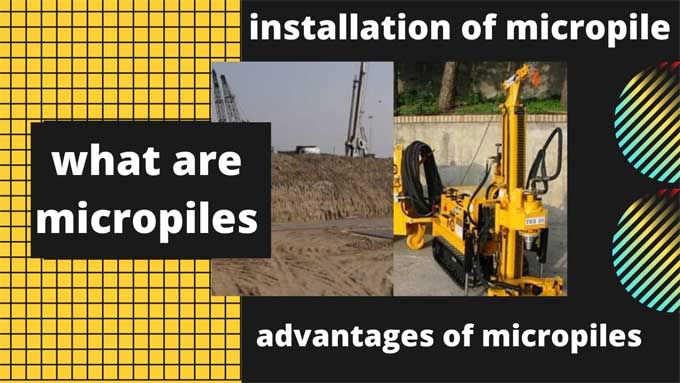
The Complete Guide to Micropile for the Construction Industry

A structure's foundation transfers its load to a layer of soil or rock that can support its weight without settlement problems. A pile foundation is a deep foundation. These buildings are usually made up of long, slender columns of steel, reinforced concrete, or timber. Piled foundations are defined as having a depth exceeding three times their breadth.
Micropile is piles that have a relatively small diameter, typically ranging from 100 to 250 millimeters.
Define Micropile
Micropile is highly strong, high-capacity drilled deep foundation elements that have the ability to support loads greater than 200 tons at depths greater than 200 feet. High-strength steel uses for Micropile construction in addition to steel casings, rebar, and grout.
Through the use of Micropile, structural loads are transferred from a poorly suited soil layer to the foundation soil. Loads are transferred from the foundation to surrounding rock or soil through high frictional values between the steel and grout of the Micropile and sheds.
Why you Need Micropile
When there is a challenging ground condition, such as a natural or artificial obstruction, sensitive ground with adjacent structures, limited access, or low headroom, Micropile is frequently used. For seismic retrofitting or in-situ reinforcement, including embankment, slope, or landslide stabilization, they are commonly used to replace deteriorating foundation systems, renovate structures, or support structures affected by adjacent construction.
Installation Process of Micropile
Micro-pile is drilled into bedrock and bonded to its wall to carry loads. A mini pile is advanced into the bedrock as the casings are advanced.
Drill rod and steel casing are left in place after the casings are advanced. The drilling bit is withdrawn when the saturation level is reached with the casing still in the bore-hole. After installing the reinforcement bar, the casing is pressed into service. Reinforce the bore-hole with reinforcement and cement water blend, as well as tremie grout.
The casing and rock sockets are filled with cementitious grout & pressure is applied. Use preinstalled grouting tubes to pressure grout after tremie grouting. A high bedrock level reaches for the casings of the mini piles, which enables binding to the bar. The top of the mini pile removes to eliminate excess steel.
Benefits of Micropile
1. A Micropile has the advantage of being able to figure in terribly engorged and low-lying areas as well as on any kind of soil surface.
2. Regardless of the environment, it is possible to dance quickly With low overhead & comparatively cheap.
3. When drilling and grouting are performed simultaneously, installation can be performed even with limited access. Micropiles are typically preferred to H piles attributable to overhead physical constraints.
4. Improves the bottom.
5. Provides greater skin friction.
6. Intentionally providing total corrosion protection.
7. There is very little disturbance caused by the vibration and noise.
8. Piling rigs may be powered by an electric motor or be low-emission.
9. With restricted headroom and engorged website conditions, they can be installed on existing walls.
10. These materials are designed to withstand high loads as well as compressive, tensile, and lateral masses.
11. Any surface can be penetrated by micro-piles.
Drawbacks of Micropile
It takes longer to overwhelm them with no obstacles than they would be with a driven pile. This is an expensive resource. Water infiltration often causes problems.
Applications of Micropile
Buildings, bridges, highway towers, and alternative unreal structures are commonly supported and stabilized by micro-pile systems, whether as foundations for new structures or remedial construction.
To learn more, watch the following video tutorial.
Video Source: VinCivil World
Due to their high load capacity and versatility, they are also used for underpinning and shoring applications.


